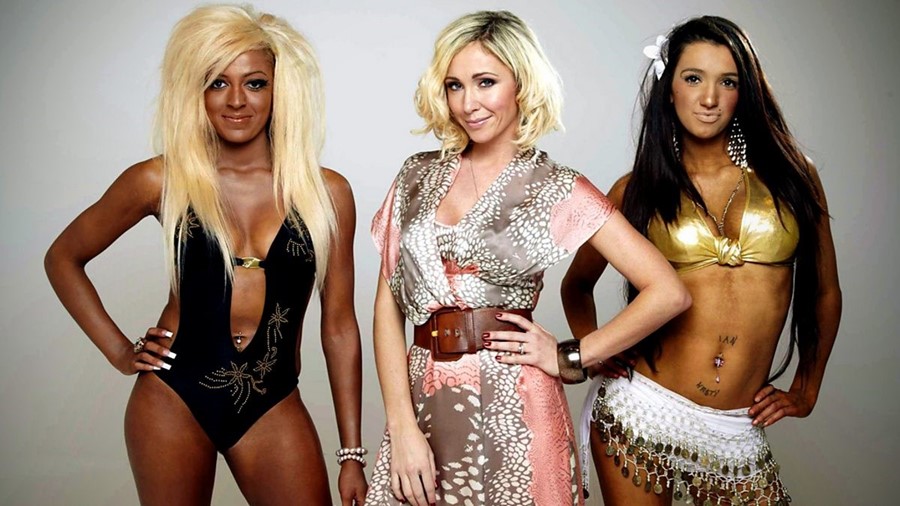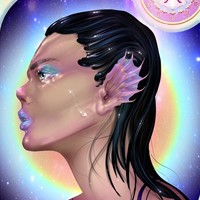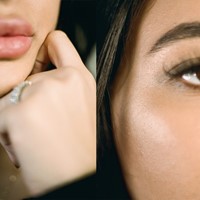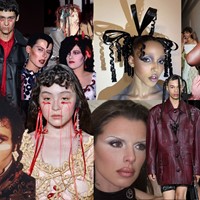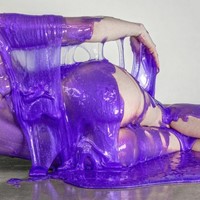20 years on from the ‘make-under show’, women who appeared on it reveal how it affected not only their perception of beauty, but their wellbeing
It’s pretty well-known by now that reality TV was wild in the 2000s, especially when it came to makeover shows. 2004’s controversial The Swan took “ugly ducklings” (women, to be clear) and transformed them into “beautiful” swans via gruelling exercise regimes, restrictive diets and a heap of plastic surgery, as did the likes of Extreme Makeover and 10 Years Younger.
Middle-aged women were the usual recruits, however one – albeit less extreme – programme aimed for younger: Snog Marry Avoid? Billed as “the world’s first make-under show”, it targeted “fakery obsessed slap addicts” (20-something women who wore hair extensions, fake tan and Russian eyelashes) on a quest to unearth their natural beauty, sometimes picking up goths, gyrus and cyberpunks along the way.
Originally broadcast on BBC3 between 2008 and 2013 and now resurfacing on TikTok, the show gave participants “make-unders” after posing its titular question to random men on the street. Every episode, a woman stepped into the “Personal Overhaul Device” with her own sense of style and stepped out looking like she was ready to perform her new single before the 8:05am weather report on GMTV. But where are these women now? We caught up with Snog Marry Avoid? participants to hear how the show affected not only their perception of beauty, but their wellbeing.
“I’ve wanted to speak out about this for a really long time,” says Martha, who appeared on the show when she was 20. Martha claims that producers chased her for six months before she agreed to participate, under the pretence that the programme aimed to celebrate individuality. “I was so excited going to film, but I came back broken. And then I saw it on TV and I was even more broken.”
A Selfridges make-up artist at the time and now a glamour model, Martha was repeatedly compared to a drag queen by the public (her make-under was nicknamed “Arthur to Martha”). “They gave me a bob and called me natural but my hair was full of extensions. They made us all look the same... It wasn’t a pleasant experience at all.”
Martha says her appearance on the show wreaked havoc on her life, ultimately leading her to therapy. “I cried like a baby after it aired, and for years I was bullied and called a drag queen. I have a lot of friends in the drag scene but I am a cisgender woman. It hurt my relationship, it made me feel vulnerable and it completely destroyed my self-esteem.” The experience even pushed her to cosmetic surgery: “I was already being called fake so I just thought, ‘Why not go and get lip filler? Why not go and get my boobs done?’”
With clips of her since going viral, Martha has written to the BBC asking them to remove the video from social media because of hateful comments, but nothing’s happened (a spokesperson for the BBC tells Dazed that the BBC has not posted any clips from the programme as it is out of license, but that the production company Banijay is now looking into removing the offending posts). “Some of my friends who also went on have had trouble finding employment because of it. It’s just awful.”
Not everyone’s experience was negative, however. A filmmaker and performance artist, Jah ‘Geisha’ Davis views hers as a “life-changing experience”. With her unique make-up influenced by her African heritage – namely the Suri tribe and Dogon culture – she credits Snog Marry Avoid? with opening the door to TV work. Although she agrees that a comment comparing her to an escapee from a mental asylum shouldn’t have aired, exposure from the show pushed her to become even more extreme as an artist.
“I didn’t wear the natural look they gave me, but it was a lot of fun and it changed the direction of my life,” she explains. “Everyone was nice to me and the crew made me feel at ease. I wasn’t interested in being on TV before that, but it made me confident being on camera.” Since then, Geisha’s found like-minded creatives and performed around the world.
For YouTuber Emily, Snog Marry Avoid? was also a jumping-off point for her career. “It kickstarted my vlogging, and loads of my followers have found me from the video,” she says, although she admits that watching her 18-year-old self back feels uncomfortable. Appearing alongside her ex, Emily went to the toilet to put her piercings back in and goth make-up back on once filming ended. “Even in that hour of having the make-under, a piece of my identity was taken away. I think that’s why I went even more extreme afterwards, because I never wanted to feel like that again.” Like Martha, the show was sold to Emily as a celebratory series. “I feel sorry for myself when I watch it. I guess I felt set up in a way.”
She continues, “Natural beauty is lovely, but for me, it’s just a bit boring. I feel like a completely different person when I do my make-up my way and dress how I want to. I instantly feel so confident and I don’t get that feeling from being natural. I think the show shamed people who tried to express themselves differently… It’s sad that TV was like that back then.”
“I think the show shamed people who tried to express themselves differently… It’s sad that TV was like that back then” – Emily
Wearing gold leggings and a leopard print bikini top, Holly* was 20 when she was scouted for the show in an Ibiza club. Her introduction segment showed her getting ready at home for a night out, and during filming she accuses producers of encouraging her mum to bring alcohol to her room to get her drunk. “I was putting fake tan on and they got a clip of my bum. I asked them not to include it and they said they wouldn’t, but of course they fucking did.”
When she arrived in London for filming, Holly says she wanted to wear a dress of her choosing, but the producers wanted the same leggings and bikini. “I tried to tell them I didn’t want to wear it but they weren’t having it. They made me put more fake tan on, they made me put more glitter on, they wanted more, more, more.”
A drama student at the time, Holly admits to playing up to a role that producers wanted, and says the show didn’t affect her idea of beauty because she’d never wear her pre and post-makeunder looks daily anyway. “It’s their job to get material, to make me look trashy and wild. The makeunder made me look like a librarian going on a night out. I was just a commodity at the end of the day.” In the years after, she’s avoided social media completely – both out of embarrassment and because of abusive public comments about her appearance and family.
As is typical of reality television – both back in the 2000s and now with shows like Love Island – none of the women interviewed say they were offered support during or after filming. “Looking back now, the whole thing feels so out of touch,” Emily says, arguing that beauty standards have become more progressive since the show. “It was about stifling self-expression, and it reduced so many women to the way they looked in the eyes of men. We’re all born as a blank canvas, and it’s our job to work our canvas as we see fit – whatever that looks like.”
In response to some of the claims made in this piece, a spokesperson for Banijay, the production company which created Snog Marry Avoid? said: “We are sorry to hear about these experiences from historic Snog, Marry, Avoid contributors. We prioritise the well-being of contributors, and while we did have production protocols in place in 2008, these have substantially evolved into the robust welfare protocols we have in place today.”
But although the show’s original run ended over a decade ago, has anything really changed when it comes to the way we discuss other people’s appearances in the media? The comments left under TikToks of the show – “they took her flavour away”, “so mean for no reason”, and “this is sad, let people express themselves however they want to!” – suggest so. “Maturing is realising that these girls were the most unique people and style icons and the show robbed them of their sparkle,” reads another. But while the popularity of these TikToks and the comments left underneath them indicate a changed perspective on self-expression and beauty since the Snog Marry Avoid? era, the same hyper-critical judgement of others still exists in other corners – whether it’s making a joke out of someone’s eyelash extensions, filming a stranger’s ‘ugly’ fit or obsessively dissecting how much filler a celebrity’s had. Maybe it’s time to remember: sometimes it’s best to just keep our opinions to ourselves.
*Holly asked for her real name not to be included in the article
